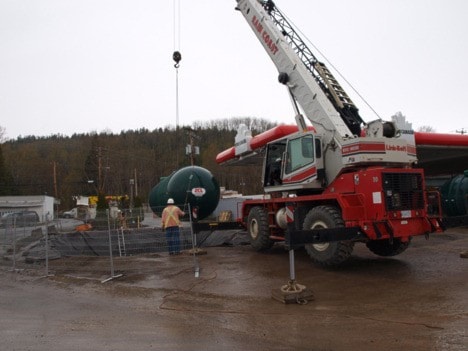The thornhill Fire Department now has large water supply capabilities in outlying areas thanks to a donation of old fuel holding tanks from Copperside Foods.
The tanks are in their 26th year of service at the Thornhill Petro-Canada and are being replaced by Copperside Foods in efforts to stay up-to-date on safety and environmental practices.
Chris Moldenhauer, one of four owners in Copperside Foods who own a group of gas stations in Terrace, said the tanks are now being cleaned and readied for the detachment.
Thornhill fire chief Wes Patterson said the largest tank, which can hold 10,000 gallons, will likely be filled with water and placed in the ground in New Remo as a water supply for potential fires in the area.
“We currently don’t have water supplies out there,” Patterson said, explaining the detachment has done this in the past for areas without access to public water.
“We actually have tanks in the ground Jack Pine Flat and Gossen Creek,” he said.
The other two tanks will likely be used for training purposes, one of which would be the simulation of fighting a hydro-carbon fire.
To do this the tanks are cut in half and are filled with water and then natural gas is plumed in, creating a simulation of a gas or diesel fire in an environmentally secure setting.
“We really appreciate having access to these tanks. They’ll provide a better level of fire protection throughout the area as well as potential better training for the fire fighters,” Patterson said.
“This is the most significant upgrade we have ever done to any of our sites,” Moldenhauer said. “It is significant in regards to being completely up to date with safety measures in place to ensure that there will never be an environmental issue to worry about.”
He estimates the project to cost around $500,000.
“It costs an incredible amount of money to get fuel to the public in an environmentally safe fashion,” Moldenhauer said.
The three tanks have been replaced with two double walled fiber glass tanks, which have a saline solution between the walls that if disturbed sets off an alarm alerting of a breach in one of the walls.
“Not many people are aware of the measures and expense that go along with building and maintaining a fueling site,” he added.
